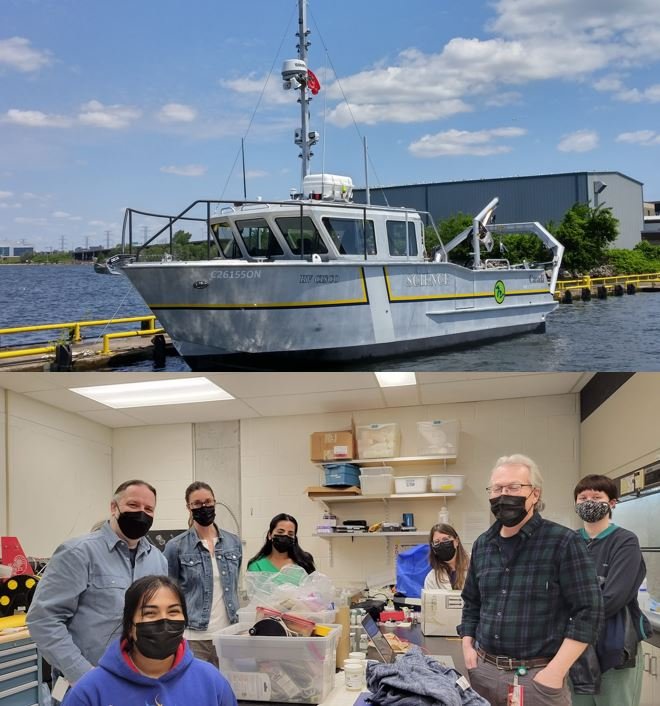
Time to celebrate a very busy and successful year for our Great Lakes Lower Trophic Lab research and monitoring activities.
- 7 spatial surveys of Hamilton Harbour in support of our Areas of Concern recovery monitoring.
- 14 sampling trips to our Hamilton Nearshore-Offshore (HNOT) paired stations in Lake Ontario.
- 13 samples from Station 81 in the far east of Lake Ontario which is collected collaboratively with Ontario Ministry of Natural Resources.
- 7 cross Lake Ontario western basin transect sampling from Port Dalhousie to Toronto’s Humber Bay
- 1 spring lake-wide mission on Lake Ontario in collaboration with Environment and Climate Change Canada.
- 5 sensor moorings deployed and retrieved.
- 5 peer-reviewed technical reports published.
- 2 journal publications and 2 more in-press.
- Training of 2 undergraduate co-op students.

The 2023 year was the intensive field-year for the binational (US/Can) Cooperative Science and Monitoring Initiative (CSMI) for Lake Ontario. Fisheries and Oceans Canada (DFO) is one of the federal leads for this initiative and we have been planning collaborative sampling since 2021. Ideally, we would have had 3 lake-wide cruises, including one in the late fall focused on Mysis and zooplankton, but our research ship, the CCGS Limnos was unfortunately stuck in drydock since the early-summer. Still, what we accomplished was a remarkable achievement for the entire team.
Our Hamilton Harbour sampling involves a spatially intensive 15 stations to gather information on food-web support for pelagic fishes in this Area of Concern. We are also tracking the changes in the planktonic food-web with the $700 million upgrade to the Woodward sewage treatment plant which went online in 2022. For this we use our primary research vessel, the RV Cisco, which has a continuous flow-through system to measure surface water properties. The main sampling involves stations for physical water column characteristics (profiling with YSI EXO2 sondes, PAR light profiler), and collecting depth-specific zooplankton composition using Schindler-Patalas traps. At a subset of stations we also collect water for water chemistry (nutrients, ions, carbon) and measure primary productivity (algal growth) and bacterial growth using radioisotopes. We have sampled Hamilton Harbour (which is where the Centre for Inland Water is based on) for many years, but this intensive sampling project is in year 5. This year we test-deployed several real-time AlgaeTracker buoys which measure temperature, chlorophyll-a, phycocyanin (for cyanobacteria) and turbidity. These data will be made available real-time next year. This past year we were also able to support some additional sampling of benthic cores by York University researchers and a harbour-wide sampling of benthos by our partners at SUNY Buffalo State, so all round, a lot of work was completed in Hamilton Harbour in 2023.
We have been sampling the Hamilton Nearshore-Offshore Transect (HNOT) since 2013. These stations are the nearshore BUR station which is 7 m deep and the offshore 60 m LO2 station. We try to maintain this sampling at least monthly every year, but during the CSMI years, we do it every 2 weeks. This year our last sampling was the second week of Dec because of the very warm fall this year (we try to sample until the lake fully mixes from top to bottom, known as overturn). We sample all the same things at these stations as we do in Hamilton Harbour, but because of the increased depth at LO2 we use two different mesh-size zooplankton nets. We complete a whole water column tow (from 1-2m above bottom to surface) of a 153 micron mesh net and we get depth specific information on depth strata (“stratified nets”) by using a closing 64 micron net to target epilimnion (surface), hypolimnion (bottom) and the metalimnion (intermediate zone).
The Western Basin transect sampling only ever happens during the CSMI years because it takes a lot of time and resources. This is 6 stations ranging from 13 m to 110 m in depth across Lake Ontario (N-S) from near the Niagara River in the south to Humber Bay in the north. This sampling really makes use of the RV Cisco’s capability because it capable of getting to Toronto in just around an hour, cruising at 34 knots (70 kph). Sampling the stations takes all day so being able to get there and back in under 2 hrs makes this possible.
As mentioned, we were disappointed to only have the single spring lake-wide cruise on the Limnos this year, but we still collected 64 stratified zooplankton stations and 21 primary productivity measures during the May cruise. Environment and Climate Change Canada (ECCC) collected over 80 stations for water chemistry and water column profiles, so it was a very successful mission overall. We did manage to get some late-year lake-wide sampling during October using the RV Cisco to sample about 3/4 of the lake for water and zooplankton over 2 days but it is nothing like having the ship available for doing this. Next year is Lake Erie, so we have fingers crossed that the Limnos will be in good working shape, and we will have 3 lake-wide cruises in 2024.

Pingback: Great Lakes Food Webs Science: GLFC Lake Committees - Great Lakes Food Webs